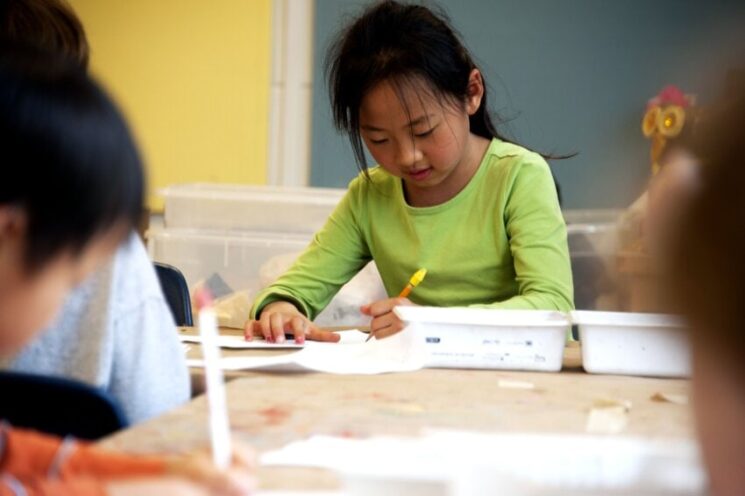
By Vy Nguyen
Coming from the vast and numerous countries of Asia, migrated parents and children settle into the melting pot of America. As they start over, little fill their hands, nothing except the clothes on their back and 20 dollars in their pockets. Yet, nothing stands in their way of achieving the American Dream as long as they grease the tires of success with just a little bit of hard work and perseverance.
This is the narrative of the model minority.
As the name indicates, the “model minority” illustrates the image of a minority race succeeding in America. Tagging Asian migrants as studious and hard-working, the rags-to-riches tale—with an American twist—tells of Asians working their way past racial and economic barriers to become successful contributors to society. If they can succeed, surely we all can, the story goes.
Yet, how closely does the model minority reflect the experiences of Asian Americans, especially for the future of youth in America?
The term “model minority” first appeared in a 1960s New York Times article, coined by William Petersen. Complimenting Japanese’ success after overcoming American internment camps, the term spread and became associated with work ethic, education and wealth.
While seemingly positive, many argued that the term’s underlying praises go towards the assimilation of Asians, rather than their achievements, while also disregarding the hurt and betrayal that echoed throughout the Japanese American community during internment. Others were upset that the term undermined the existence of racial barriers to success, which filled the air during the civil rights movement of this era.
Today, education and hard work remain no less a value to the next generation of Asian Americans. Especially as many Asian youth today identify as first-generation students, the motivation to move up in their lives fuels their perseverance.
For some, the positive expectations set for a minority race have been reported to encourage academic potential and is a way of embracing Asian identity. On the other hand, by generalizing Asian Americans, which is the nature of a stereotype itself, the model minority makes all the diverse experiences of Asian youth into one monolith.
The reality is, Asian Americans are more complex than we think. The statistics for income of Asian households are often high, but it is only skewed. When breaking it down by ethnicity and region, East Asians tend to have higher income averages, when other ethnicities face poverty.
In fields of education, a stereotypically Asian-dominated field, Southeast Asians still face barriers to graduation. For Vietnamese Americans, there is a graduation rate of 10%, which drops to 5% for Cambodian Americans.
The assumption that Asians are stereotypically successful removes them from the conversation of oppression and equal opportunity, all the while preventing help for underrepresented Asian ethnicities, especially as students seek scholarships, welfare, or need-based opportunities.
As the model minority draws a line between minorities, it could also portray racial barriers as absent in “free America,” muddling the demands for social justice from others, especially from African Americans.
During the pandemic, unity between Black and Asian communities nationally was seldom publicized. As youth enter the conversation for racial equality, they inherit the historic divide between Asian and Black Americans, tracing its roots back to the start of the model minority in the 1960s.
The Reality
The model minority paints one picture of the Asian experience. Here’s another side, told by an Asian youth of Fountain Valley High School (FVHS).
“For me, I’m a musician and artist, a people person and a visionary,” junior Mady Pham said.
Pham is a Vietnamese and Chinese American. Growing up in the US, the assumptions that come with the Asian title, such as being good at math and coming from a wealthy family—both of which aren’t true—confused her about her place in the US as an Asian and an American.
“I think being Asian American is its own subculture and culture itself,” Pham said. “You’re not just Asian, you’re not just American—you are Asian American…You [may not] relate to people from your home country and you [may not] relate to white Americans.”
Though seemingly positive, Pham sees the set of stereotypes assigned to Asian children from when they are born as restrictive and deprives the diverse generation of youth from pursuing other dreams.
“We’re not all doctors…or people that do computer science,” Pham said. “There’s a lot of Asian Americans that are artistic, but because there’s so much pressure on us to be a certain way, behave a certain way…a lot of us turn away from our passions.”
While the model minority can be positive when taken at the surface level, Pham believes that it is also antiquated.
“We [Asian Americans] are our own people, we have our own identity,” Pham said. “If you want to do art, do art. If you don’t want to be a doctor, you don’t have to be. We have to rewrite the [narrative].”





